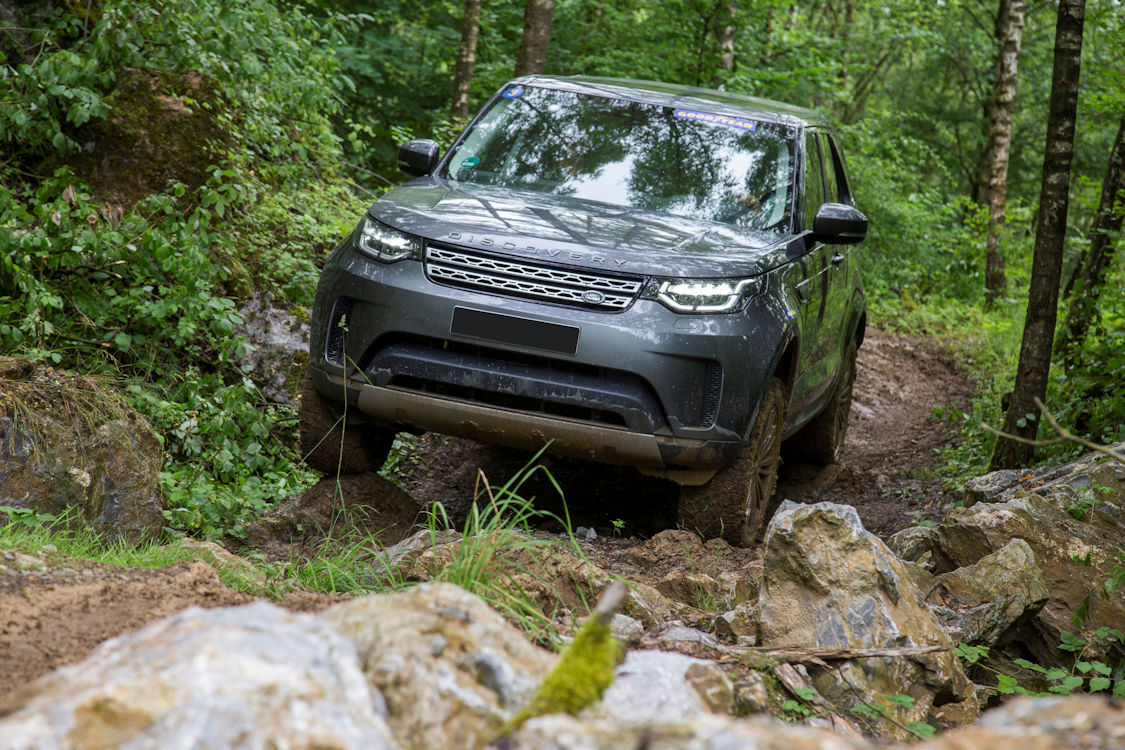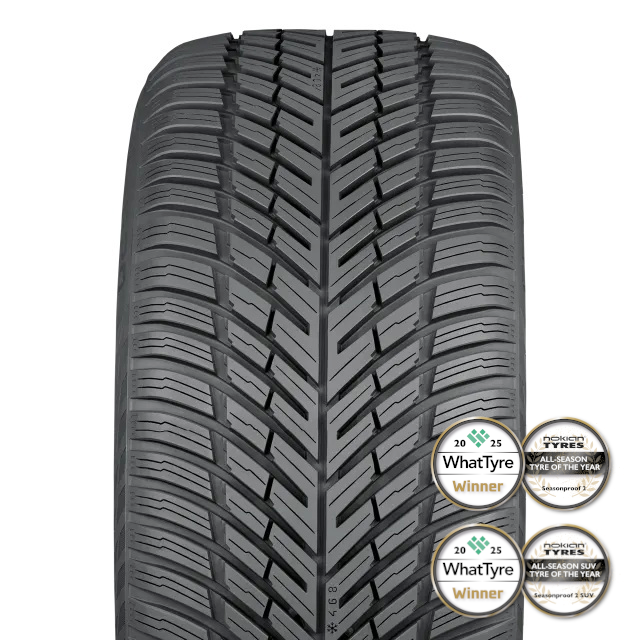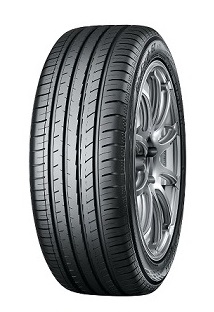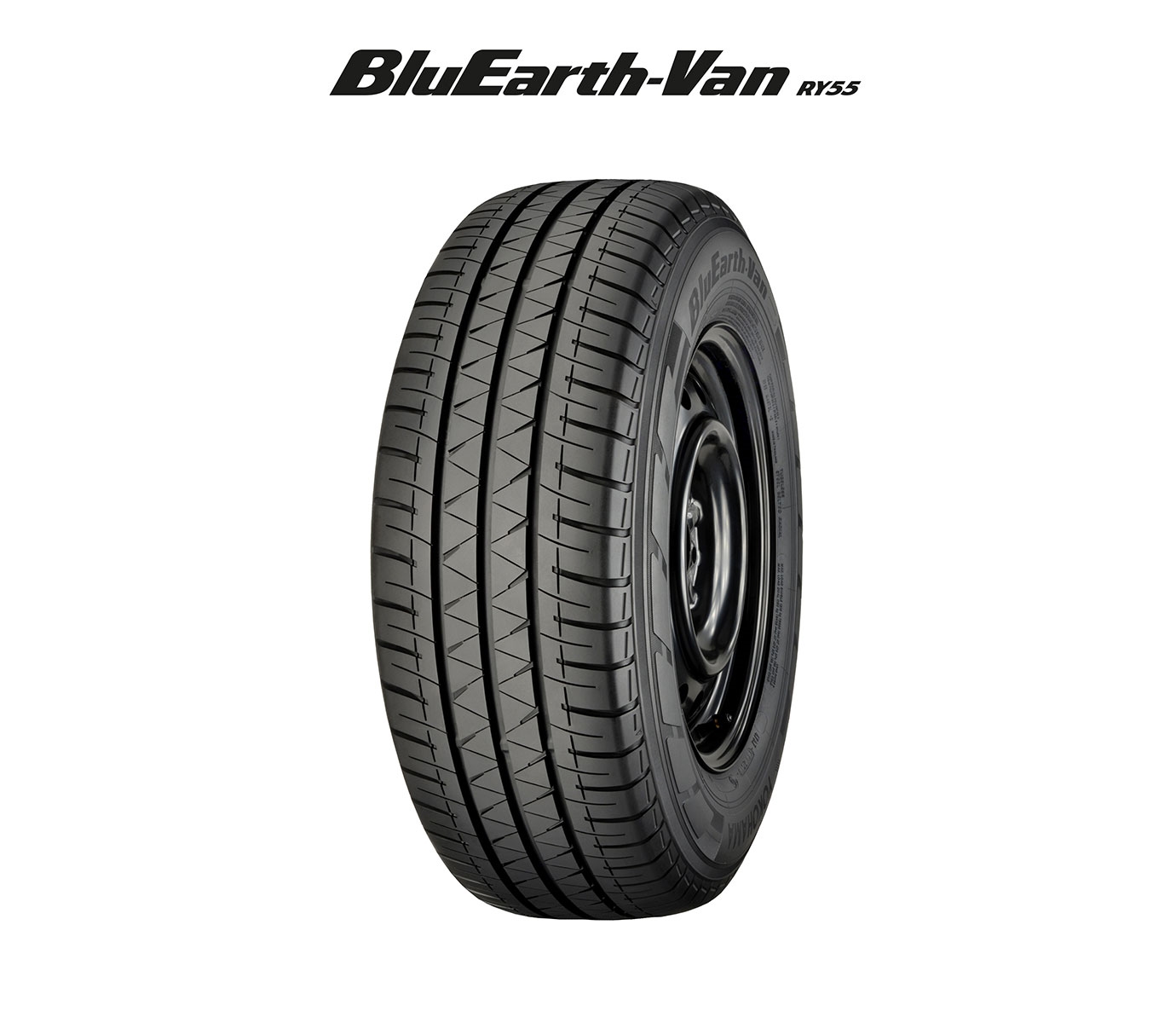Chunky, aggressive tyres make 4x4s and pick-ups look tougher but aren’t exactly ideal for everyday road use. In addition to increasing fuel consumption and compromising both braking distances and cornering grip, they make the driving experience louder. Many drivers consider this a high price to pay for rugged appearance, but these tyres also provide greater traction and robustness when venturing off the tarmac. But which all-terrain (AT) tyres strike the best balance for drivers who want both off-road ability and road use? To find out, motoring publication auto motor und sport tested seven tyres in size 255/55 R18: five winter-approved AT tyres, one pure summer AT, and one road-optimised SUV tyre.
The technical demands of AT tyres are straightforward. They must deliver adequate grip on asphalt while also ensuring good traction in mud, on grass and sand, and, where relevant, on snow. They should also be robust enough to withstand damage from rocks or other obstacles. Yet qualities critical in everyday traffic – such as short braking distances and secure cornering on wet or dry asphalt – often take a back seat in AT tyre development.
Off-road performance
In mud, the five winter ATs – BF Goodrich All-Terrain T/A KO2, Bridgestone Dueler A/T002, Falken Wildpeak A/T AT3 WA, General Grabber AT3 and Loder AT1 – performed relatively evenly. Among the summer tyres, the Goodyear Wrangler offered even better grip in these conditions than the winter ATs. The road-biased Continental CrossContact H/T, by contrast, was of little use once things became slippery.
On gravel, however, the differences were more apparent. The Falken stood out with the best traction and lateral grip, followed closely by the sportily tuned BF Goodrich and the Bridgestone. General, Goodyear and Loder trailed somewhat. On compacted dirt tracks, the Goodyear excelled, while Bridgestone and Falken were less convincing. Unsurprisingly, the Continental struggled in all off-road trials, given its tread design and construction.
On-road performance: a safety concern
The picture changes entirely on asphalt. The Continental CrossContact H/T delivered by far the safest behaviour on both wet and dry roads, with short braking distances and stable handling. Bridgestone and Falken achieved a respectable ‘good’, while General and Goodyear were rated satisfactory. Loder and BF Goodrich, however, proved completely unsuitable for road use – especially in the rain, where their poor grip posed a serious safety risk.
Winter conditions
On snow, the Loder AT1 impressed most of all, outperforming even the aggressive BF Goodrich KO2 and the equally strong General Grabber AT3. The Falken offered decent traction and braking but weaker dynamics. The Bridgestone, however, was only recommended for drivers who encounter snow infrequently.
A victory for Falken
For predominantly summer road use, conditions common in the UK and large areas of Europe, the Falken Wildpeak AT3 proved the best overall AT tyre and scored consistently across all surfaces. But for year-round use including proper winter conditions, the General Grabber AT3 was the clear choice – Auto motor und sport named this tyre its ‘all-season winner’.
The Goodyear Wrangler AT Adventure showed strong summer off-road qualities, while the Continental CrossContact H/T provided the safest behaviour on asphalt, though it is not winter-approved and lacks true off-road ability. The Loder AT1 excelled in snow and load-bearing capacity but offered little safety on wet asphalt, while the BF Goodrich KO2 delivered strong off-road credentials at the expense of safety and comfort.
The auto motor und sport test serves as a reminder that while AT tyres look adventurous and perform well in mud, gravel and snow, they come with serious drawbacks on normal roads. Loud rolling noise, higher fuel consumption and dangerously long wet braking distances are common traits. For drivers who spend most of their time on asphalt, conventional summer or all-season tyres remain a far safer and more economical option. AT tyres should only be chosen by those who truly need their off-road ability – and even then, careful tyre selection is essential.
How the tyres performed
BF Goodrich All-Terrain T/A KO2
+ Very good winter characteristics: strong traction with slip, comparatively secure cornering even at larger steering angles; good damping of mechanical impacts; very good traction in mud and on dirt tracks; strong cornering grip on fast gravel stages; aggressive, striking off-road look.
– Very long braking distances and very poor cornering grip on wet asphalt; long braking distances on dry roads; quickly overwhelmed in evasive manoeuvres (massive understeer); loudest tyre inside the car, vibrations at speed; extremely high rolling resistance, hence poor fuel economy.
Bridgestone Dueler All-Terrain A/T002
+ Comparatively short braking distances on wet asphalt; best braking performance of all ATs on dry asphalt; robust, quiet for an AT, relatively comfortable ride; good lateral stability and cornering reserves on gravel.
– Longest braking distances, weak lateral grip and unstable handling on snow; narrow safety margins in the wet & limited aquaplaning reserves; noticeable humming noise; slightly reduced comfort and weaker damping compared with BF Goodrich; weak traction on dry dirt tracks; longer braking distances on gravel.
Falken Wildpeak A/T AT3 WA – overall test winner
+ Strong all-round performance; the most balanced AT tyre in the test; good braking, traction and lateral grip on snow; comparatively short wet braking distances, with the best safety reserves and most predictable handling on wet asphalt; overwhelming grip in mud and gravel; very high cornering safety, shortest gravel braking distances; good damping, relatively quiet inside.
– Weaker snow handling and dynamics; slightly longer braking distances on dry asphalt; somewhat louder rolling noise than the best road tyres; slight traction deficit on dry dirt tracks.
General Grabber AT3 – Test winner for all-season use
+ Very secure on snow: strong braking, traction and cornering grip; predictable handling; good wet braking with pronounced reserves, forgiving behaviour; quieter inside the cabin than most AT competitors; pulling power in mud, strong traction on dirt tracks; good off-road traction from standstill.
– Weakness in aquaplaning safety; somewhat longer braking distances on dry asphalt; limited cornering grip on gravel, with below average braking, traction and steering.
Loder AT1 (Delta4x4)
+ Shortest braking distances, best cornering grip and strongest traction on snow – best winter performance in the test; very high load capacity; good on slippery dirt and soft surfaces.
– Very long wet braking distances, insecure cornering and highly unbalanced handling with both over- and understeer; sluggish steering on dry asphalt, with major corrections needed in quick lane changes; loss of grip in the dry limit range, scrubbing and juddering; loud internal rolling noise; weak braking on loose surfaces with ABS engaged, indifferent handling on gravel.
Continental CrossContact H/T (Highway/Terrain, summer tyre)
+ By far the safest and most controllable on wet and dry asphalt: shortest braking distances, secure handling, stable aquaplaning behaviour; surprisingly robust and steerable on gravel, given its road-oriented tread; comfortable, relatively quiet; very fuel-efficient with low rolling resistance.
– Very limited off-road capabilities; no 3PMSF snowflake symbol; predictably weak on muddy & dirt tracks compared with true ATs.
Goodyear Wrangler All-Terrain Adventure (summer AT)
+ Short braking distances on wet asphalt for an AT; balanced & predictable handling overall, relatively quiet and comfortable; very strong traction in mud; convincing, direct and secure cornering grip on gravel; good braking reserves on dry asphalt; lowest exterior rolling noise of all tested AT tyres.
– Not winter-approved (no snowflake symbol) – snow performance not tested; weak aquaplaning resistance; slightly longer braking distances on dry asphalt compared with road tyres; on dirt, the winter-rated ATs showed slightly better traction.










